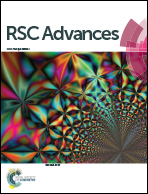A polypyrrole-supported carbon paper acting as a polysulfide trap for lithium–sulfur batteries
Abstract
Lithium–sulfur (Li–S) batteries with high theoretical capacities and low cost are a strong candidate for future energy storage, but their development is hindered by many shortcomings, such as high-rate capacity decay due to the “shuttle effect”. Herein, we increase the capacity retention and cycle life of the Li–S battery through the addition of an interlayer made of polypyrrole (PPy)-treated carbon paper (CP) in a Li–S battery. We first quantitatively investigate the effect of the thickness of the carbon paper and then optimize a novel interlayer prepared by using PPy adhered to the carbon paper. The results show that 300 μm CP is the best choice among the three thicknesses. The CP-300 samples deliver a reversible capacity of 490 mAh g−1 after 200 cycles with a 0.5 C rate and show the best rate performance. Because of the porous structure and conductivity of the as-prepared PPy interlayer, the battery incorporating the PPy interlayer exhibits more excellent cycle performance and better rate performance than the CP batteries. Surprisingly, the PPy-coated CP-200 battery displays a reversible capacity of 555 mAh g−1 after 200 cycles with a 0.5 C rate. This feasible way to modify a carbon paper interlayer may have promising prospects in the Li–S battery field.



 Please wait while we load your content...
Please wait while we load your content...